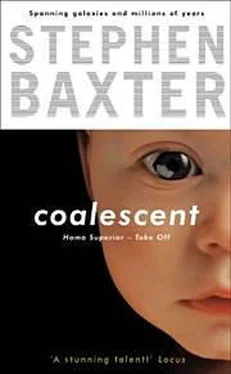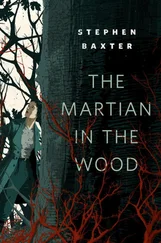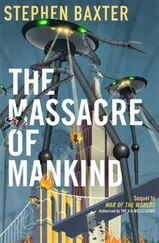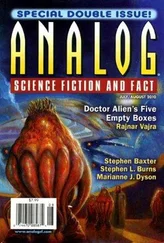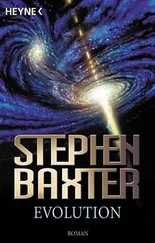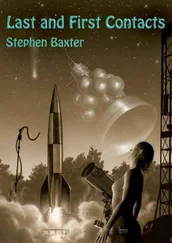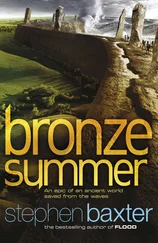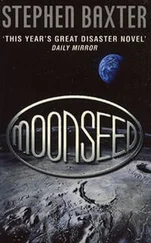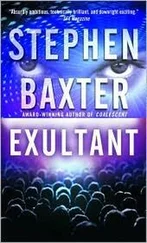But all the data was put online nowadays by the U.S. Geological Survey and the Australian Seismological Network, and the Slan(t)ers had been able to get their hands on it. And in the disregarded “noise,” they had seen “linear signals,” as Peter put it — signals that emanated not from a point, but from a straight line. “What you have is a track through the Earth’s layers,” said Peter, “as if you’d fired a bullet through a wedding cake.”
There had been occasional observations of linear signals for years. The Slan(t)ers, though, seeking patterns ignored by the seismologists, had found three such events in the last year.
Peter said, “Knowing the timing of the events, you can unwind the turning of the Earth to trace the path back beyond the planet to its origin, or destination. We can’t find a unique destination for our three tracks — but they do seem to have a common origin. The sun. Somehow the sun is firing out dark matter nuggets, and some of them are passing through the Earth. What does this mean? Damned if I know. But there’s more … I’m attaching a graphic file.” Which I wouldn’t be able to download here.
I skimmed Peter’s verbose description, trying to get to the meat. Apparently, this particular “linear track,” actually the second observed by the Slan(t)ers, wasn’t so linear after all. “A little while after penetrating the upper mantle,” said Peter, “this nugget’s track diverged through about forty degrees. Then it skimmed the core and shot out of the Earth, in the vague direction of Mars. George, you see the significance? Dark matter passes through the Earth’s core like a hot knife through butter. Earth’s gravity field isn’t intense enough to impose a deflection like that. This nugget changed course …”
Well, it was intriguing. But throughout my relationship with him, much of the information Peter tried to give me was simply too much for me — the ideas too big, too dislocated from the everyday, the stretching of my worldview too much to take. This was just such an example.
I sent him a note about how extraordinary claims require extraordinary proof. Then I shut down the system.
I ate that night in a little open-air tourist-trap restaurant, a complicated walk of a few blocks from the hotel. Most of the menu was seafood, served with or without pasta.
* * *
The next morning I walked around Rome. It was a voyage of discovery; I knew nothing about the city. My geographical research before setting off had been restricted to renting The Italian Job , which, it turned out, was set in Turin.
In the ancient area of the forums, embellished by all the Caesars and ruined by time, herds of tourists grazed. I passed a couple of old ladies, American, who were debating whether to go with their guide into yet another site, the Forum of Augustus. “I’m getting a little tired,” said one. “I think I’ll go back to the bus. Will you do this one for me, dear?” She handed her tiny digital camera to the other. So, I thought unkindly, it’s the camera that is actually taking the tour.
The area was cut through by a wide, attractive road called the Via dei Fori Imperiali, which led from the Colosseum to the National Monument. The Monument had been erected in the nineteenth century to celebrate Italian national unity. The locals called it the Vittoriano , after the king Victor Emmanuel — or, less respectfully, the Typewriter . And meanwhile that great via had been built by Mussolini, who had bulldozed his way over the ruins of the forums with barely a squeak from compliant archaeologists, in order to build a route for his fascist processions.
The National Monument dominated the broad, open square of the Piazza Venezia, the hub of the Roman traffic system: if all roads lead to Rome, they said, so all Roman roads led to the Venezia. And in the piazza the Roman drivers just drove at each other, neither giving nor expecting mercy. In Rome, the cars were clearly fueled by testosterone as much as petrol. And yet, I thought, watching for a few minutes from a pavement cafй, the crowding traffic actually cleared its way through quite efficiently. Somehow amid the apparent chaos, things sorted themselves out — just not the way I was used to.
I spent the morning poking around shopping streets. As the sun climbed so did the temperature, and I was soon sweating through my heavy English shirt; I stopped frequently at cafй s or grocery stores for bottled water.
I quickly formed an impression of the Romans. Small and dark they were, and they all talked constantly. And they were intense: I decided that the characteristic Roman tone of voice was aggrieved exposition, just this side of exploding. They all seemed to have cell phones clamped to their ears, almost all the time — even quite small children — their eyes glazed, their free hands gesturing eloquently, futilely. The cell phone might have been invented for Italians.
But I did wonder what they had to talk about. The monuments all seemed to close for siesta periods in the middle of the day, the post offices all shut at one, the banks would open for maybe an hour in the afternoons if you were lucky, and everything closed on Mondays. The xenophobe in me wondered how I would feel if I were German or French, a fellow traveler on the great adventure of the single European currency. And yet, I knew, the Italian economy was actually large and healthy.
Somehow, like the traffic, the work got done, things sorted themselves out.
* * *
The Jesuit mother church is called the Gesu, just a block from the Venezia. Claudio Nervi was waiting for me on the pavement outside. “Call me Claudio,” he said, shaking my hand, after I greeted him as “Father.”
He was perhaps fifty and his hair was neatly combed silver-gray. His eyes were blue, but his thin face was deeply tanned — he was handsome, in an aging-patrician way. He wore a black suit with the regulation priest’s white collar, but the suit was suspiciously well cut, and I wondered if it came from a design house. He seemed poised, confident, intelligent.
“Well now—” He stretched his long arms. “ — welcome to Rome. It’s good to meet you, and I hope I can help you with your difficulty.”
I thanked him. “Your English is good.” It was, with the kind of upper-crust accent so familiar from Noлl Coward films that nobody in England dares use in public nowadays.
He smiled. “I spent some years studying in a seminary near Oxford. Look, are you in a rush? Would you like to see the church? …”
I followed him into the gloom of the Gesu.
A handful of worshipers, old folk, sat patiently in the pews. The church was sumptuously decorated, as many Roman churches are, with a lush Baroque painting on one wall.
But on one high side altar, a human arm was on display.
At first I couldn’t quite believe my eyes. I stepped closer. On top of that altar was a reliquary, an elaborate oval casket in gold and crystal, with an angel floating beside it. And inside the casket there was indeed a human arm, intact from the elbow socket down. There were even bits of flesh, black and withered, clinging to the bones.
Claudio was murmuring softly, “Many visitors are struck by the wealth of Roman churches. One looks at every surface, and the eye is greeted by treasure, and dazzled. But they are after all the result of two millennia of dedicated wealth accretion — one can’t put it any other way — although today the Vatican is not stupendously rich; it is less wealthy than many of the larger American dioceses, for instance … Oh. I see you have met our hero.”
The arm turned out to be a relic of Saint Francis Xavier, who in the sixteenth century had been a Jesuit missionary to India and Japan. He had died of a fever on an island off the coast of China, and had been buried there. The Jesuit general in Rome had ordered the body exhumed and reburied on Goa — and that the right arm be cut off at the elbow, to be enshrined back in Rome.
Читать дальше
